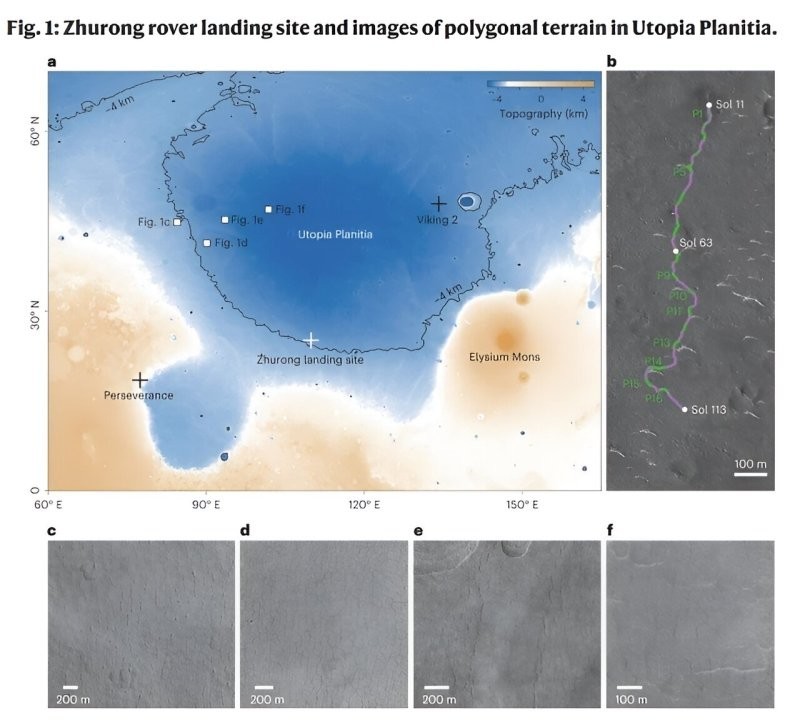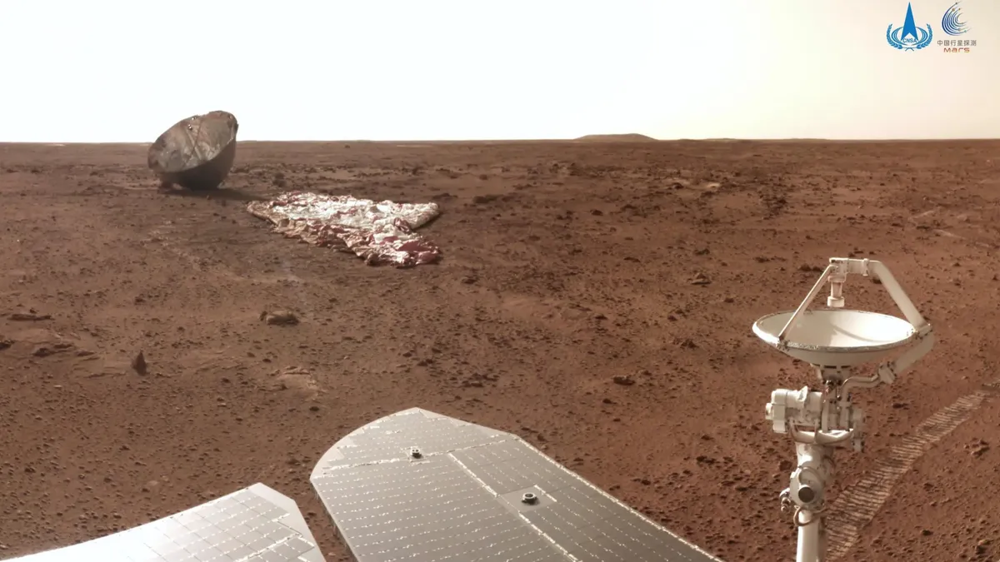Chinese rover disappeared on Mars after discovering strange polygons (4 photos)
If scientists have figured out the strange polygons and found out their nature, they still cannot figure out how to get the Mars rover to communicate. 
But first things first. And so the Chinese successfully landed on Mars on May 15, 2021, their Zhuzhong rover spent more than a year vigorously roaming around one of the largest impact basins on the Red Planet: Utopia Planitia and dropping gigabytes of useful information to Earth.
The rover, named after the Chinese god of fire, explored its landing site, sent back photos, including a selfie of its lander taken with a remote camera, studied the topography of Mars and conducted other science experiments. 
It was he who discovered 16 buried wedge-shaped polygons 10 meters below the surface of the planet. Scientists are confident that the structures are sedimentary, formed as a result of thermal processes in various climatic conditions. After studying all the data provided, scientists came to the conclusion that there might have been an ocean in this place. 
And it turned out that 400,000 years ago there was still snow on the planet.
Having traveled 2 kilometers along the bottom of the Utopia Plain, “Zhuzhong” disappeared - communication with it was interrupted in 2022. But we must pay tribute to the Chinese comrades - the main service life of the rover was three Earth months, and it successfully worked for just over one Earth year. 
The Chinese National Space Administration (CNSA) is still trying to establish contact with it without success, but the winter in the northern hemisphere of Mars, where the rover is stuck, has been harsh. Not only were temperatures very cold for the area, below -100°C, but the dust storm seriously reduced the likelihood that the rover would be able to generate any power from its solar panels.
Since December 26, scientists expect weather conditions to improve and do not lose hope of “reaching out” to the rover.






























